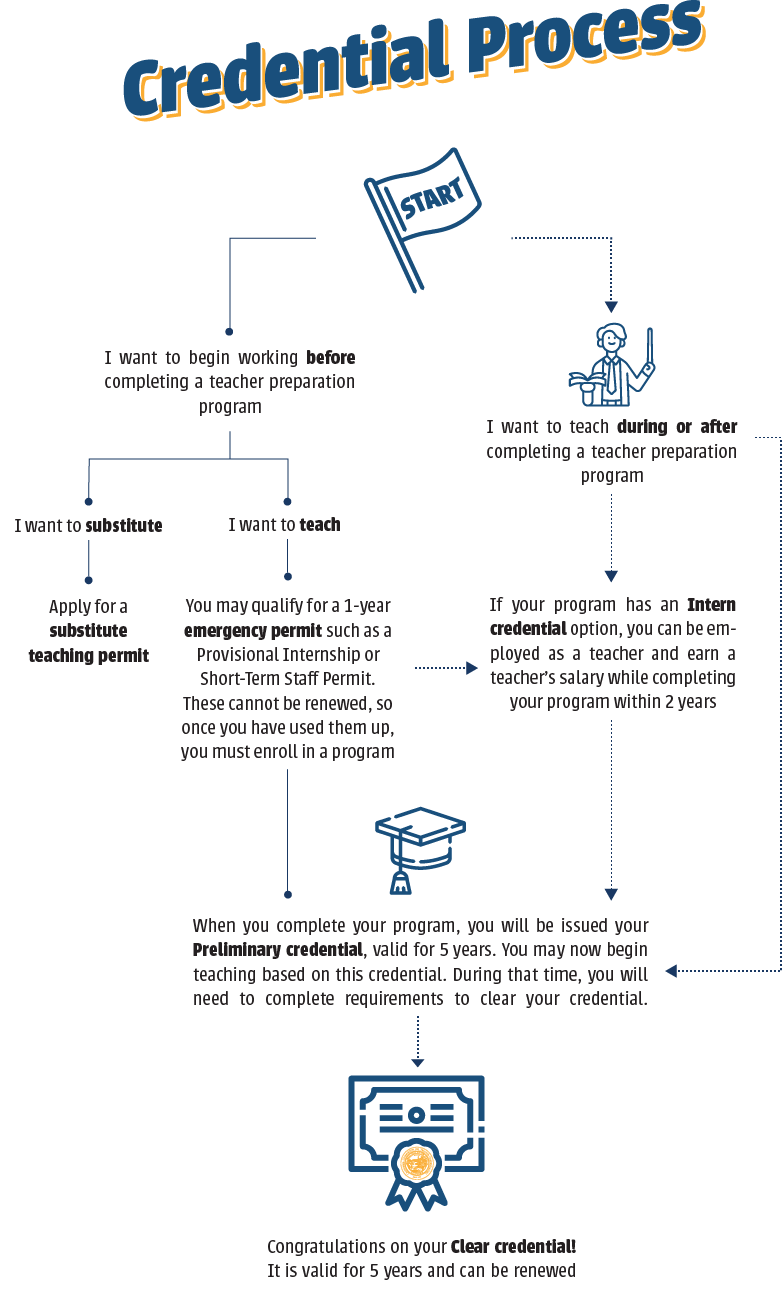Education Specialist Instruction Credential Quick Facts
Teach Special Education
Offered in 5 specialty areas, grouped by student needs
5-year issuance
Teach any subject as long as credential matches disability area of students
Do you want to teach students with disabilities?
Maybe you already have some experience working with people with disabilities or maybe you have the qualities needed to be a great teacher for children with disabilities. With the Education Specialist Instruction teaching credential, you'll teach the students who need specialized support and an Individualized Education Program (IEP). The Education Specialist Instruction teaching credential authorizes you to teach all subjects, provided your credential matches the disability areas of your students. Special Education is one of the credential areas that is always in high demand with hiring local education agencies. If you want a rewarding career with high job security helping students with disabilities, consider becoming a Special Education teacher.

These are the specialty areas available for Education Specialist Instruction credentials.
- Mild to Moderate Support Needs (MMSN)
Includes specific learning disabilities; mild to moderate support needs; autism; emotional disturbance; intellectual disability; multiple disabilities; orthopedic impairment; other health impairment; specific learning disability; traumatic brain injury; and authorizes service in grades K–12, transitional kindergarten, and in classes organized primarily for adults through age 22.
- Extensive Support Needs (ESN)
Includes autism; deafblind; extensive support needs; intellectual disability; multiple disabilities; orthopedic impairment; other health impairment; emotional disturbance; traumatic brain injury, and authorizes service in grades K–12, transitional kindergarten, and in classes organized primarily for adults through age 22.
- Early Childhood Special Education (ECSE)
Includes the mild to moderate support needs and extensive support needs listed above; authorizes service to children ages birth to kindergarten only.
- Deaf and Hard of Hearing (DHH)
Includes deafness; hearing impairment; deafblind; autism; and authorizes service to individuals ages birth through 22.
- Visual Impairments (VI)
Includes blindness; visual impairment; deaf-blindness; and authorizes service to individuals ages birth through 22.

So what's the process?
First things first: if you want to teach in California, you need a credential. There are different levels of credentials available depending on where your journey begins. You may start out with an emergency permit (which you would obtain through a public school employer), an Intern credential (which would allow you to teach while you complete a preparation program), or a Preliminary credential. It all depends on whether you want to begin working before completing a teacher preparation program, during, or after.
A teacher preparation program takes about two years to complete and receive your Preliminary credential. Once you have your Preliminary, the final step is to upgrade to the Clear credential by completing an induction program (which is a mentoring and support program for beginning teachers). After you have cleared your credential, all you have to do is renew it online every five years.
Ready to get started on your Education Specialist Instruction credential?
If you need help deciding which credentialing program model suits your needs, check out Which program pathway will you choose?
For the full list of requirements to obtain an Education Specialist Instruction credential, check out Education Specialist Instruction Credential Requirements for Teachers Prepared in California.
.png?sfvrsn=c28b72b1_10)
.png?sfvrsn=cd8b72b1_0)
